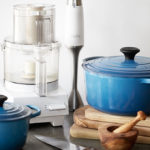
The two most important rules of thumb for a healthy diet have to do with reducing your chemical load and maximizing nutrient values in your food.
Beginning with where your food comes from and ending with what it comes into contact with in your kitchen before it lands in your belly. No you don’t need need to know your egg-laying hen’s name, but it would help if you did know your farmer’s!
1) Eat chemical-free, nutrient rich foods.
When it comes to the major ingredients in your diet: the veggies, meats, eggs, mushrooms and dairy; it’s important to make an effort to buy those foods from local, small scale producers.
Knowing your source is as important with produce, as it is with animal products.
The fresh foods that you find in the grocery store have made their way to the aisle from far reaching places throughout the world. This raises concerns that are not just socio-economic and environmental. They have a direct impact on your health.
Shopping at your local Farmer’s Market will give you access to
- Organic produce and animal products at the best possible prices.
- Fresh produce, usually harvested within 24 hours of market.
- Produce grown with “beyond-organic” methods in rich soils, with higher nutrient/ mineral profiles.
- The highest quality, ethically produced meats, eggs and some dairy.
- Your farmer, and the opportunity to get the details about their practices.
Some key issues with fresh foods found in supermarkets include
- Produce shipped over long distances, “organic” included, are picked long before they’re ripe and may have traveled submerged in a chemical bath to prevent them from ripening before they reach you.
- Many vegetables, greens in particular, loose they’re precious vitamin content within 2-3 days of being harvested. Most veggies at big grocery chains are many days or weeks old.
- The USDA “organic” label allows for organic pesticides, which can be as toxic as synthetic sprays. The organic produce you buy may or may not be what you expect.
- In terms of meats, eggs and dairy, you simply cannot know what you’re getting.
- Labels such as “cage free” and “organic” are deceptive, because food production is complicated and so are the guidelines the USDA sets in order to allow industrial farms access to these labels.
- You will over pay for all the labels you seek out: pasture-raised, organic, etc.
Now I’m not suggesting you abandon the supermarket. It can be pretty super, and a good source for all sorts of pantry staples. It’s the fresh, whole foods that you want to buy directly from the farmer–as often as possible without giving yourself anxiety.
When selecting your vendors at the Framer’s Market
Look for farm-stands that are on the smaller side and run by the farmer. In general this a good starting point. Know that the USDA has made it very difficult for small-scale farmers to become certified organic. Whether they have the organic certification or not isn’t as important as how they answer these questions:
- Do you use any pesticide sprays, organic or otherwise?
- Do you use any synthetic fertilizers?
If the answer is no to both of these, then you’re good. Usually a farmer that has good practices doesn’t mind telling you about them. If the farmer is agitated and defensive about the sprays they use, just move on. If they apply IPM (Integrated Pest Management) just get the details and see what feels right. You’ll want this information for veggies, fruits, legumes, nuts and mushrooms too. For meats, eggs and dairy ask:
- Are your animals raised outside on pasture, with access to ample sun and room to forage freely–not just inside a cage-free shed.
- If they’re fed supplemental feed, is it organic?
Again, a farmer that is applying these principles will gladly share this information with you and may even show you pictures of their farm. If you find a farmer who’s livestock is pasture-raised and only supplemented as needed by organic grain, these animals almost never get sick, they have no need for antibiotics, they are not pumped with hormones, or fattened with disease producing GMO corn.
When you shop at the Farmer’s Market you will find that organic produce is by and large quite inexpensive.
Be prepared to balance the low cost of produce with slightly more expensive meats and eggs, and you’ll be pleasantly surprised at how little you’ll need to spend to feed your body nutrient-rich, high quality foods.
2) Use chemical-free, high quality cookware and kitchen tools.
...a large part of what constitutes a healthy diet are considerations of food packaging, storage, cookware, kitchen tools, natural cleaning products and water filtration.
One of my biggest points of contention with healthy lifestyle critics is that it’s elitist or too expensive. This is simply not true. You don’t have to gauge your pockets and fill your kitchen with Le Creuset to improve your environment.
I personally do have several coveted Le Creuset pots, but it took many years and getting married to have those beauties become part of my collection. Prior to that, I had set myself up with perfectly healthy stainless steel and cast iron pots for a fraction of the cost. But pots are the just the tip of the icebreg.
Don’t weigh your body down with toxins.
Chemicals in your cookware can effect your hormones and make you gain weight. Let yourself heal and regain your natural balance.
Being mindful of reducing the chemical load in your life is important whether you’re actively healing your body, or would like to generally improve or maintain good health.
Did you know that chemicals like Teflon and plastics are not only confirmed cancer causing agents, but have also been linked to obesity and mental disorders such as A.D.D.?
Follow my kitchen tips to greatly reduce your exposure to these and many other hormone disrupting and cancer causing chemicals. Take these steps to get started:
- Use wood or cork cutting boards. Plastic cutting boards not only infect your food with chemicals, but are also a breeding ground for bacteria. Wood has natural anti-bacterial properties.
- Store your foods in glass containers. Plastics again, transfer chemicals onto your food, even when they are “BPA free”. This just means BPA was replaced with sister chemicals that have yet to get a bad wrap.
- Use wooden, stainless steel or silicone cooking utensils.
- Use enamel, cast iron, earthenware or good quality stainless steel pans. Stay away from anything non-stick. Teflon will infuse chemicals into your food and new high-tech materials can’t be trusted because we simply don’t have the governing bodies in place to control and test these substances. Hint, hint: the EPA/ FDA has maintained Teflon as a safe chemical despite a criminal amount of evidence proving otherwise.
- Use unbleached paper sandwich baggies instead of ziplock bags or shrink-wrap. Soft plastics are especially toxic and should be minimized as much as possible.
- Don’t use microwaves. The high frequency waves spin the cells of the food so fast that they become “retarded”, severely damaging the nutritional value. The few studies that have been done on microwaves have shown this to be true.
- Use Dr. Bronner’s liquid soap instead of any other dish washing soap.
- Use plain vinegar to clean all the surfaces in your kitchen instead of chemical cleaning sprays. Use Bon Ami in the sink or an especially grimy stove top.
This may sound like a lot of work, but no need to worry.
After years of fine tuning this lifestyle for myself, my arsenal of tips will make this process so simple it’ll be easier than having to find decent take-out.



